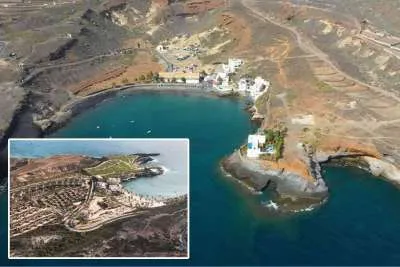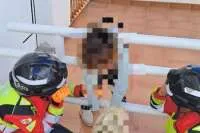LA PALMA: Scientific data and logic suggest that the eruption is over
- 16-12-2021
- National
- Canarian Weekly
La Palma has woken up for the third day to no activity from the Cumbre Vieja volcano, and the question on everyone’s lips is, ‘Is the eruption over?’ Residents of the Aridanne Valley say that for the first time in almost three months they are waking up to the sounds of birds singing, as opposed to the relentless rumble of the mountain that exploded into action on September 19th.
The volcano has been inactive since Monday night, and the scientific committee of the Canary Islands Volcanic Emergency Plan (Pevolca) has said it needs a period of ten days of inactivity to confirm the end of the eruption. That means, if it doesn’t reactivate, the end of the eruption will be certified by Christmas.
More daring is the veteran volcanologist Juan Carlos Carracedo, who, based on his knowledge of the historic eruptive activity of the Canary Islands, and on the scientific data of the most recent eruption, is convinced that it has come to an end.
“If there is no seismicity and there is no feedback, there is no engine for a reactivation. The logical thing in these circumstances would be to predict, with the possibility of being wrong, that we are in the terminal phase, not to say that the eruption has already ended," says the expert who witnessed the Teneguía eruption in 1971 first hand, which ended in a similar way.
"When Teneguía began to show signs of weakness, it stopped abruptly and never showed symptoms of eruptive activity again", Carracedo said. “The Cumbre Vieja volcano has caused incredible economic and emotional damage but I am sure that the area and the people will recover," predicted the retired researcher from the Higher Centre for Scientific Research (CSIC).
He explained that “the end of the eruption is based on the fact that, when the volcano stops providing energy, a kind of plug is produced which, if it cools, increases in viscosity. It would take a lot of energy to remove it, which the volcano is not showing signs of.”
However, the volcanologist stressed that it will take a long time before this part of the island will be safe again because the degassing of the lava runoff causes sulfur dioxide and, above all, carbon dioxide to accumulate in the lower areas of the volcano.
"These gases, which are purely eruptive, will rapidly diminish and will be replaced by air from the atmosphere that will penetrate through the fissures," he said, warning that, over the next few years, the volcano will continue to give off heat through the cracks and fissures, and will emit plumes of steam every time rain penetrates shallow pockets of still hot magma.
This phenomenon is observed daily in Lanzarote, in the Islote de Hilario in the Timanfaya National Park, where, as a tourist attraction, a bucket of water is poured through a tube that, due to the heat that remains in the subsoil, comes out as steam as if it were a geyser. This fact proves that the heat is maintained despite the fact that the last Timanfaya eruption was almost 200 years ago in 1824.
"This will be witnessed for a long time to come because this volcano is huge compared to the previous volcanoes of the Cumbre Vieja ridge", says Carracedo, “and just three days after the eruption started, the Teneguía volcano of 1971, seemed like a toy compared to this one.”
No lava flows, no earthquakes, no tremor:
The Pevolca scientific committee confirmed yesterday that the volcano continues without vital signs. “There is no evidence of lava flows from the western base of the main cone, or from outlets of volcanic tubes. In the lava delta of the Las Hoyas area, the flow that ran over previous ones has stopped ", explained the scientific spokesperson for Pevolca, María José Blanco.
As for seismicity, geophysics indicates that it remains at very low levels at all depths. In addition, the disappearance of the tremor, the vibrations caused by lava and gases as they flow through the crater ducts, has made it possible to detect more tremors of lesser magnitude that until now were masked by the noise of the eruption. On the other hand, no notable variation has been detected in the deformation of the ground.
Regarding the emission of sulfur dioxide, the only parameter of the eruptive process that remained high, has now fallen to an extremely low level, below 5 tons per day, Blanco said. Yesterday, the air quality was good in all monitoring stations, except in Los Llanos, where a high level of particles smaller than 10 microns was detected, closest to the cone.



























































